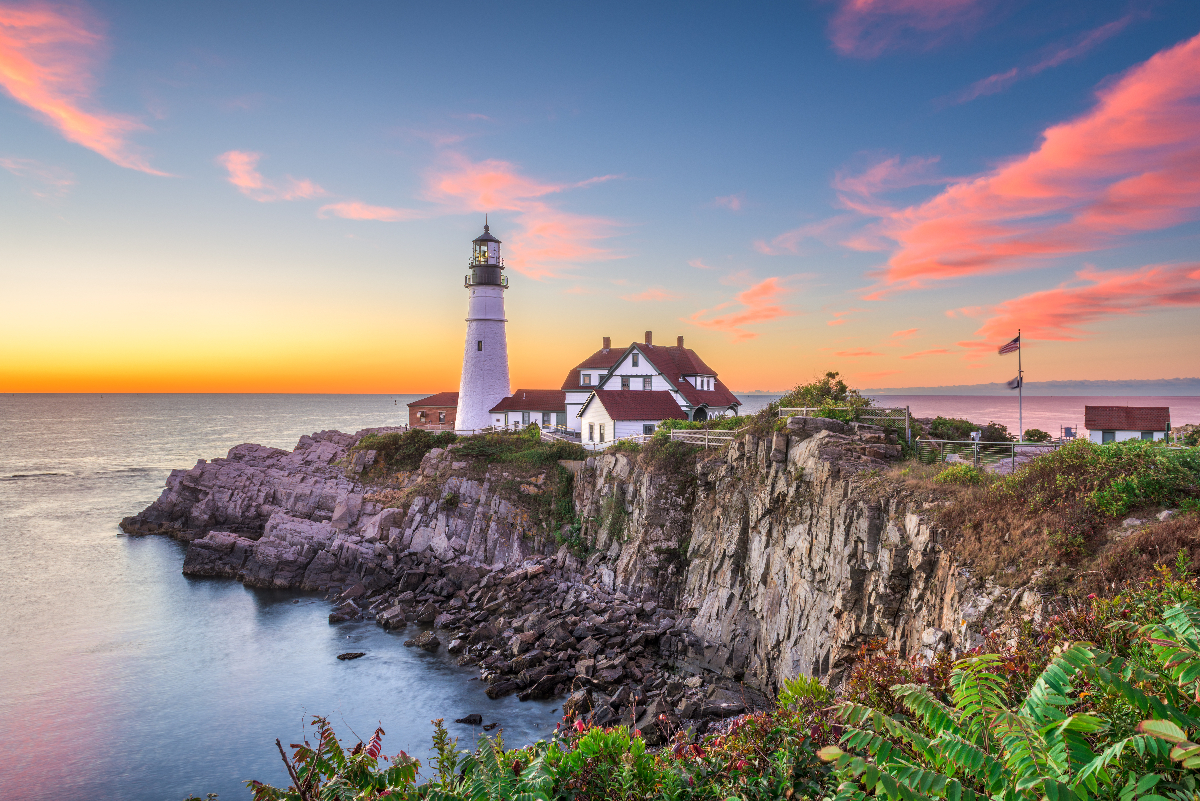8 U.S. Lighthouses Are Worth a Visit
Something about lighthouses draws us in. The towering beacons safely guide ships to shore, standing as a pillar of strength against rough seas, time, and weather. They consistently shine a guiding ray of hope even when the wind and surf swirl out of control.
Lighthouses come in many shapes and sizes, practically taking on human qualities. We admire the historic structures for these reasons and more. Let’s take a closer look at the history of lighthouses and where you can find some of the most iconic towers.
The First Lighthouse
Before the development of ports, civilizations built fires on hilltops to help guide mariners ashore. People then began building a fire on a raised platform to improve the visibility of seafarers. Practices evolved, eventually leading to more formal structures we know today as lighthouses.
The world’s first lighthouse is a point of contention among historians. Many widely acknowledge the Pharos of Alexandria, built in Egypt around 280 BC, as the first lighthouse in recorded history. It is undoubtedly one of the first and the archetype of all lighthouses since that time.
The Pharos of Alexandria was one of the Seven Wonders of the Ancient World and soared over 300 feet in height. It was made of stone and generated light by an open fire in front of a bronze mirror. Multiple earthquakes eventually destroyed the legendary tower.
The Boston Light, built in 1716 on Little Brewster Island in Boston Harbor, was America’s first lighthouse. British troops destroyed the beacon during the Revolutionary War. Massachusetts rebuilt the Boston Light in 1783. The tower has undergone many repairs and upgrades through the years.
Initially lit in 1854, the Alcatraz Lighthouse was the first on America’s west coast. It was a navigational aid for over 50 years before being replaced in 1909. When the prison closed in 1963, we added a modern beacon and automated the lighthouse.
Lighthouse Revolution
Early lighthouses burned wood, coal, or candles to generate light. Lighthousekeepers later turned to oil lanterns. While some utilized kerosene, most U.S. lighthouses in the 1800s used whale blubber as oil lantern fuel. In the mid to late 1800s, electric lamps emerged as an illumination alternative.
Austin Fresnel introduced a glass lens in 1822 that revolutionized lighthouses. His lens comprised a single lamp inside what looked like a giant beehive. The thick prisms bent the rays to the center of the lens, magnifying the light into a bright beam, visible for many miles at night.
Fresnel developed his lenses in six different sizes, which we call orders. Seacoast lighthouses typically have a 1st, 2nd, or 3rd-order Fresnel lens. These were more instrumental in warning ships as they approached land. Harbor and sound lighthouses primarily use a 4th, 5th, or 6th-order Fresnel lens.
First Lighthouse With a Fresnel Lens
The Cordouan Lighthouse in western France was the first to use a Fresnel lens on July 25, 1823. Which lighthouse holds the honor in the United States is an interesting story.
America received a Fresnel lens in 1840, intended for the Sandy Hook Lighthouse. However, upon arrival, we discovered the housing was too small to accommodate the lens. So, one year later, the Twin Lights in nearby Navesink, New Jersey, received that lens and another, making them the first U.S. towers to utilize a Fresnel lens.
Do not feel bad for the Sandy Hook Lighthouse. The tower eventually received its lens in 1857, and it holds another distinction.

Oldest Operating Lighthouse
Now, we can officially recognize the Sandy Hook Lighthouse. Completed June 11, 1764, it is America’s oldest operating lighthouse. Initially, the 103-foot-tall octagonal tower housed 48 oil blazes. Today, it has an automated 3rd-order Fresnel lens, emitting a fixed white light that you can see for 19 miles on a clear night.
It became a National Historic Landmark on its 200th anniversary. The iconic beacon is in the Gateway National Recreation Area in Highlands, New Jersey.
Spain’s Tower of Hercules is the world’s oldest operating lighthouse. It was built in the 2nd century CE. Although restored in the 18th century, the original Roman structure forming its core remains in place.
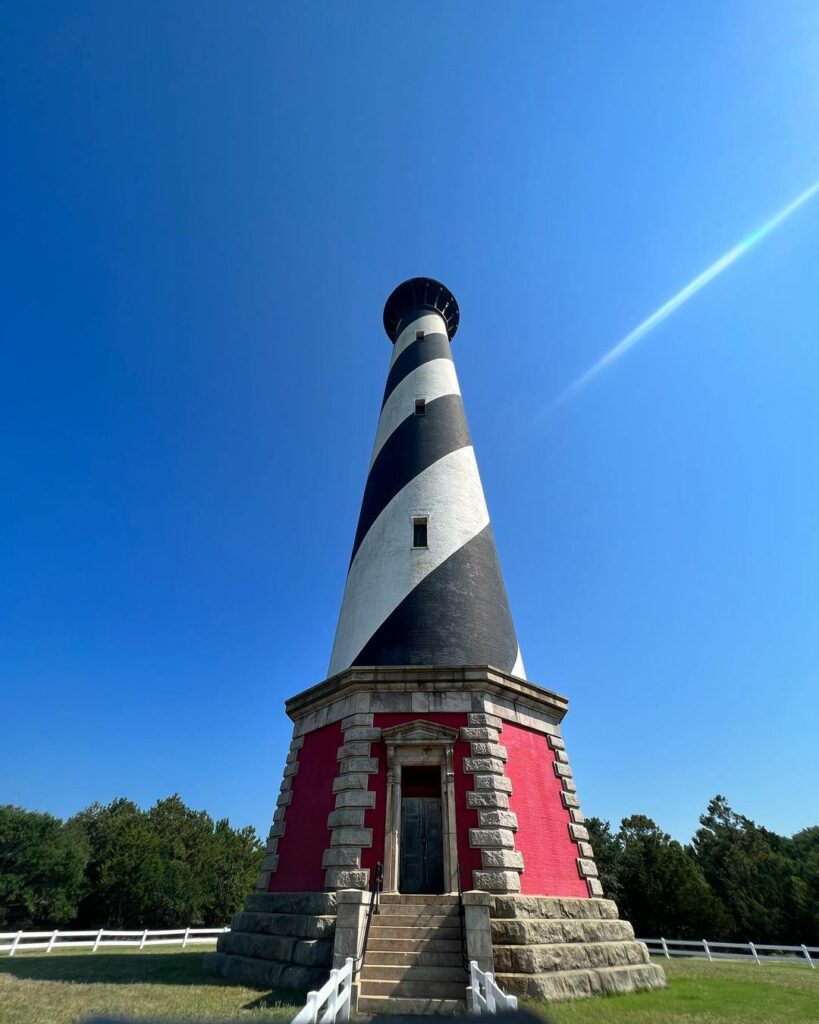
Tallest Lighthouse
Saudi Arabia’s Jeddah Port Control Tower, at 436 feet, is the world’s tallest lighthouse. Unlike most lighthouses, the Jeddah Tower also serves as a control center for the city’s port and harbor operations. It was built in 1990 and is operational today.
The iconic black and white striped Cape Hatteras Lighthouse on North Carolina’s Outer Banks is America’s tallest at 198 feet. Interestingly, the Statue of Liberty was initially considered a federal lighthouse when we lit its torch in 1886. The entire statue, including the pedestal and figure, stands 305 feet tall. It would easily be our country’s tallest if used as a lighthouse.
Smallest Lighthouse
The shortest lighthouse registered with the United States Coast Guard is the Pocahontas Lighthouse. It is a mere six feet high. The “tower” is on Echo Point, Great Diamond Island, which sits just off the coast of Portland, Maine, in Casco Bay. Visitors must settle for spotting it from the water since it is on private property.
Country With the Most Lighthouses
Approximately 20,000 lighthouses stand across the entire planet. The United States constructed over 1,500, more than any other country. Around 700 of those beacons remain in the country today.
It may surprise you to hear that Michigan, with about 130 towers, has more than any other state. Although not a coastal state, four Great Lakes touch the Michigan shoreline.
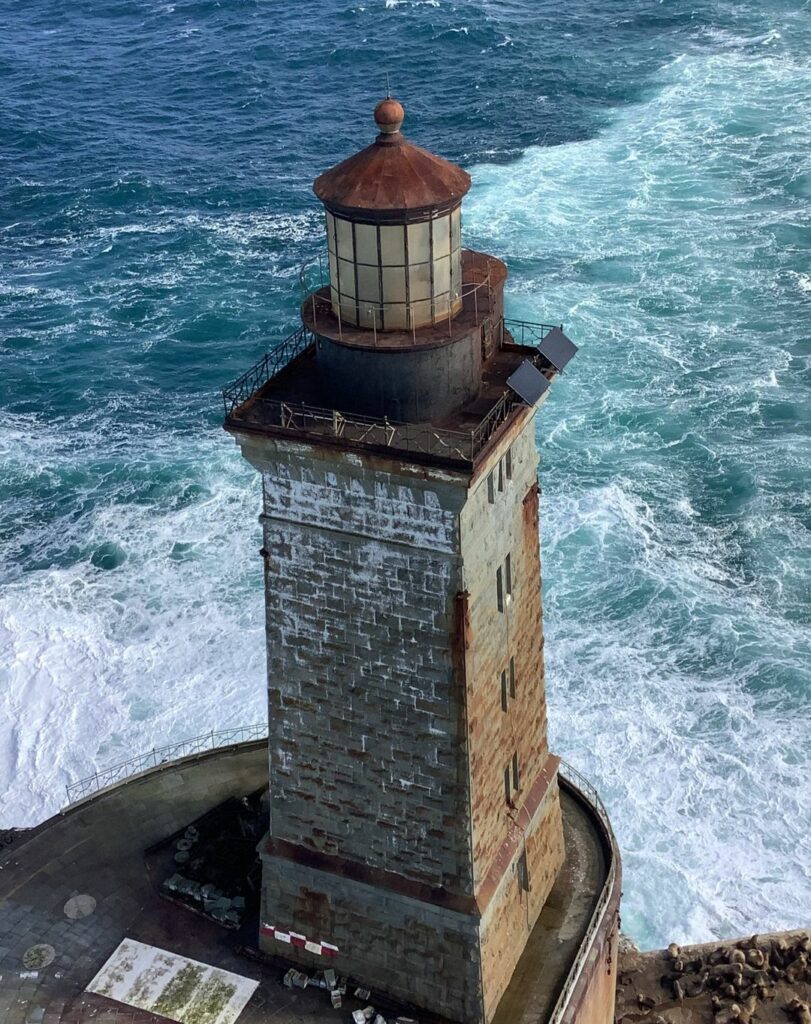
Most Expensive Lighthouse
The St. George Reef Light, one of the Pacific Coast’s most exposed towers, was built on a small rock, about 300 feet in diameter. Due to ocean waves crashing into the site from all sides, it was one of the most challenging lighthouse projects ever undertaken.
The beacon was initially lit in 1892 but took about a decade to complete at a cost of over $700,000. If we account for inflation, the project would cost more than $20 million today.
To say the lighthouse was isolated is an understatement. Log books from 1892 to 1939 reveal an average of five visitors annually. Those numbers include inspectors and tender crew members. The life of a keeper at the St. George Reef Light was a lonely existence.
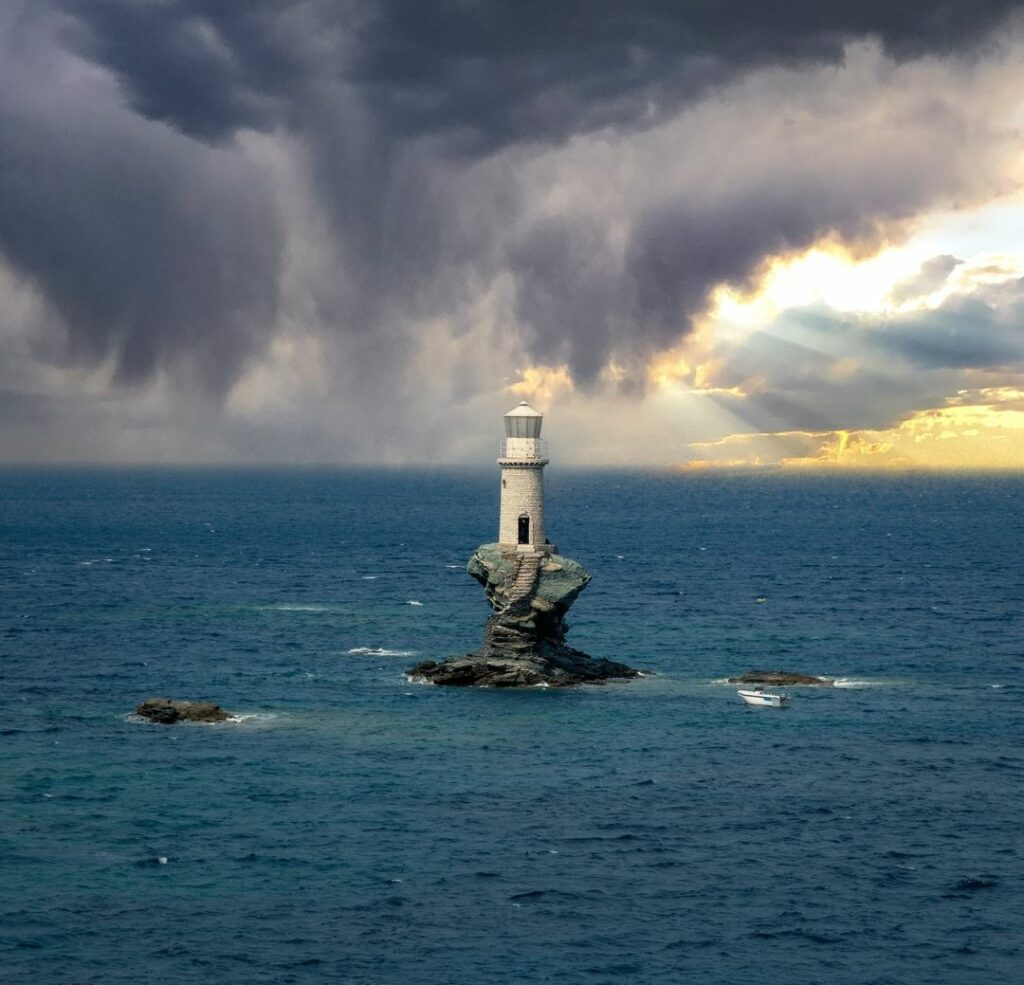
Most Unique Lighthouse
Admittedly, beauty is in the eye of the beholder, and this category is subjective. One beacon, however, consistently appears on nearly any list of unique lighthouses.
The Tourlitis Lighthouse in Andros, Greece, looks like something out of a fairytale. A carved stone staircase wraps around the base of a narrow spire that protrudes out of the water. It seems like the perfect dwelling for a wizard.
Initially built in 1897, the tower was destroyed in World War II. It was rebuilt in the 1990s, becoming Greece’s first automated lighthouse without a keeper.
Most Isolated Lighthouse
The Thridrangar Lighthouse sits 4.5 miles off Iceland’s southern coast in the Westman Islands. Its name means “three rock pillars.”
Nestled atop one of those rocky spires, it is only accessible by helicopter. Constructed in the late 1930s, scaling the rock was the only way to reach the tower for years.

Iconic Lighthouses in the United States
With so many lighthouses in the United States, it is challenging to determine which are the most famous. Beyond those listed above, these are some of the country’s most iconic towers.
Portland Head Light
The historic lighthouse in Cape Elizabeth, Maine, lit in 1791, is Maine’s oldest lighthouse. Portland Head Light sits along the rugged coastline, yielding picturesque views of Portland Harbor, Casco Bay, and four other lighthouses along the horizon.
You likely have seen the conical white tower with black trim in photographs with waves crashing into its base along the rocky shoreline. It is undoubtedly one of the most photographed lighthouses.
Guests can explore a museum in the former keepers’ quarters. Fort Williams Park, adjacent to the tower, offers hiking trails and picnic areas with stunning ocean views.
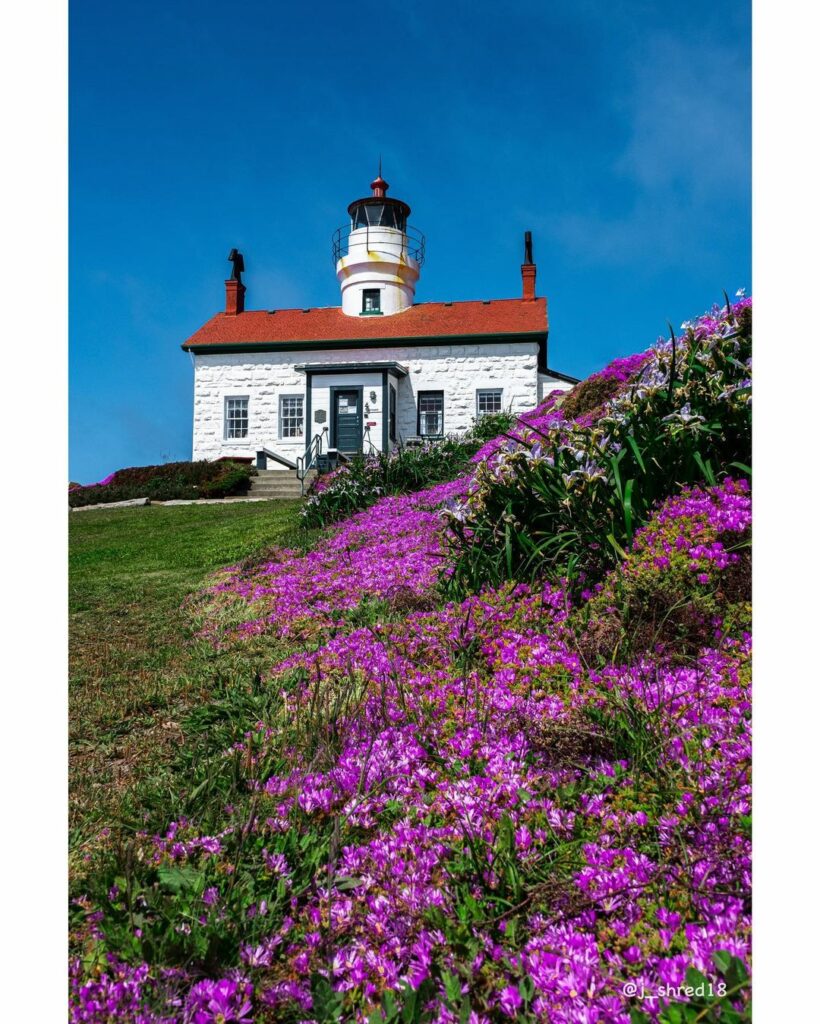
Battery Point Lighthouse
Sitting along the edge of the Redwood National & State Parks in Crescent City, California, Battery Point Lighthouse is a tiny island at high tide. The tower was lit in 1856 and automated in 1953. Visitors can cross the land bridge during low tide to access the lighthouse.
In addition to visiting the lighthouse and museum, guests regularly spot seals, sea lions, and various birds in the area. It is also an excellent spot for tide pooling. Of course, most guests enjoy scenic drives or hikes under the nearby coastal redwoods.
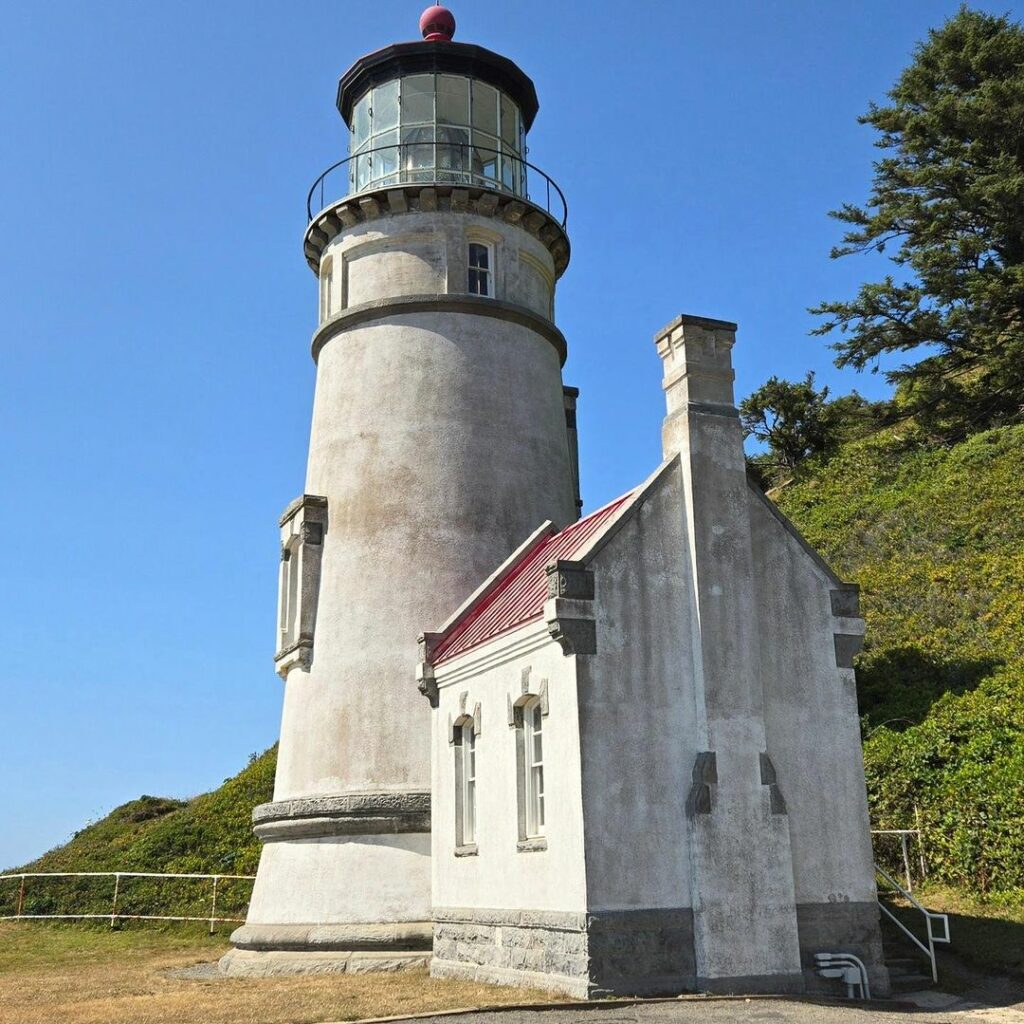
Heceta Head Lighthouse
The stunning Oregon Coast harbors many historic lighthouses. North Florence boasts the Heceta Head Lighthouse, a 56-foot tower lit in 1894. France manufactured most Fresnel lenses. However, the Heceta Head lens hails from England. The assistant keeper’s house is now a bed and breakfast, offering lighthouse enthusiasts a unique opportunity.
Beyond the tower, the Heceta Head Lighthouse State Scenic Viewpoint offers much to see and do. The Cape Creek Bridge is striking in its own right. Many visitors enjoy hiking, birding, and wildlife viewing. The sandy beach with tide pools and caves makes for a fun beach day whether you want to relax or explore.
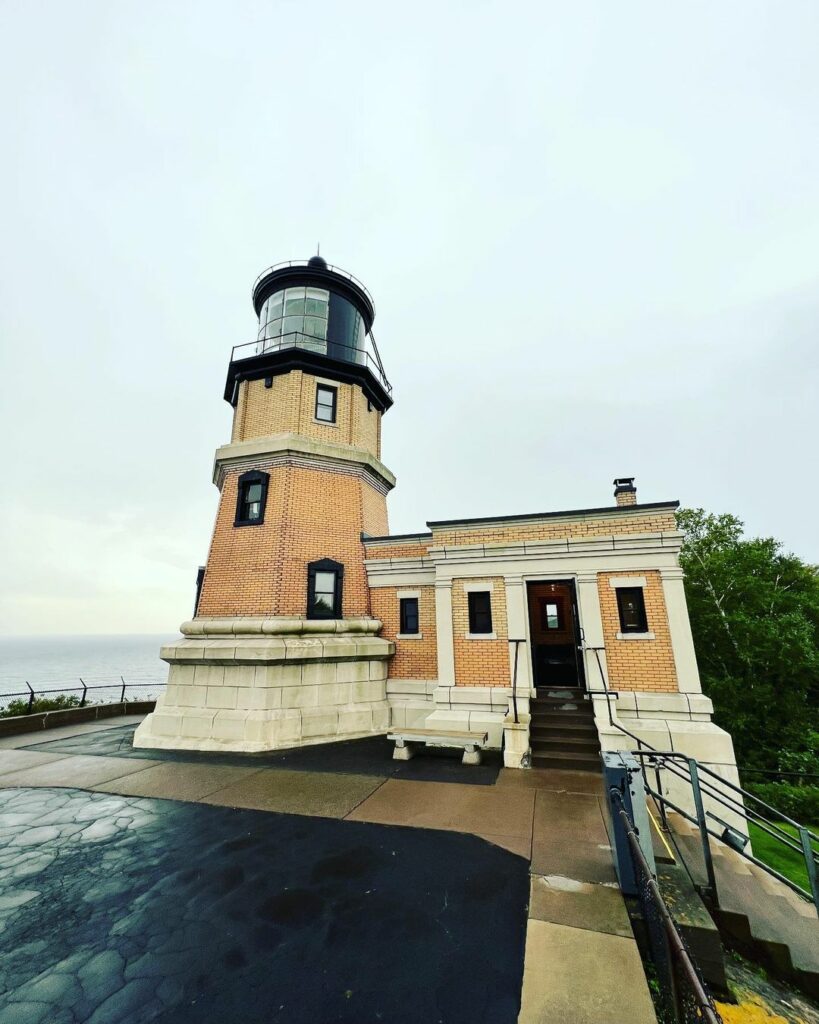
Split Rock Lighthouse
Two Harbors, Minnesota, proudly houses one of the state’s most popular attractions, a 54-foot beacon on the edge of a 130-foot cliff overlooking beautiful Lake Superior. Split Rock Lighthouse, lit in 1910, was only accessible by water for fifteen years. Minnesota paved a road, and tourists flocked to the area to glimpse the iconic tower clinging to the cliff’s edge. Even in the late 1930s, around 100,000 people visited annually.
Split Rock Lighthouse earned National Historic Landmark status in 2011. Guests can view an award-winning film, artifacts, and exhibits in the visitor center. The 25-acre site also features several original structures, including a fog signal building, an oil house, and the home of a former keeper and his family.
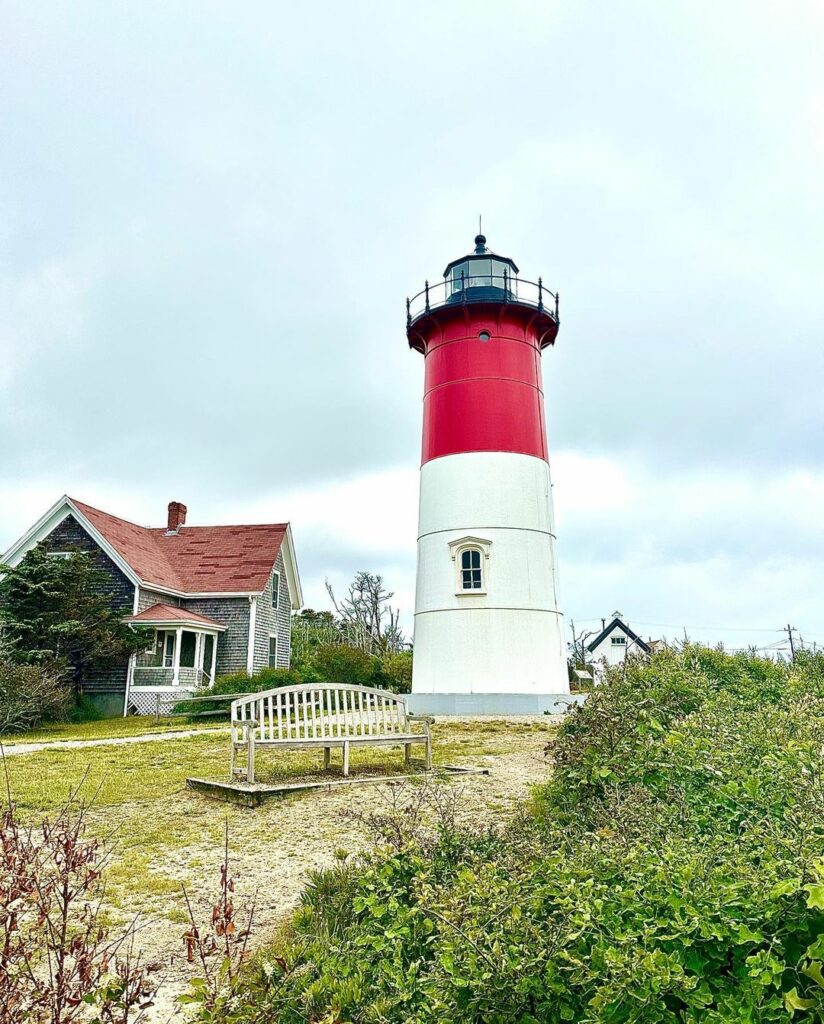
Nauset Lighthouse
You may recognize the iconic Cape Cod National Seashore tower with a white base and red top. Cape Cod potato chip bags proudly feature the Nauset Light. Due to its location, you can explore the national park site visitor center and the adjacent sprawling sandy beach.
One of the most significant benefits of visiting the Nauset Light is its proximity to other lighthouses. Many are easily accessible, some by walking, others by driving.
A few Cape Cod lighthouses require considerable effort. Many visitors find those experiences more rewarding than the Nauset Light. Race Point Lighthouse requires a 3.5-mile round-trip trek on sand. To reach Wood End and Long Point Lighthouses, guests must walk across a lengthy jetty at low tide. Whether you want a challenge or a casual experience, Cape Cod offers plenty of lighthouses to meet your needs.
Poplar Point Lighthouse
North Kingstown, Rhode Island, has America’s oldest surviving wooden lighthouse. The Poplar Point Lighthouse, built in 1831, is an example of an integral lighthouse, where the tower and keeper’s dwelling get incorporated into one structure. Although the house was stone, the Poplar Point tower was wood.
Today, the wooden wonder is privately owned. So, visitors must view it from a distance. One of the best spots is from a breakwater across Wickford Harbor in Sauga Point.
Juniper Island Lighthouse
Resting on a 13-acre island in Lake Champlain near Burlington, Vermont, the Juniper Island Lighthouse is America’s oldest surviving cast iron lighthouse. The original tower, built in 1826, was made of brick. A cast iron tower replaced it twenty years later.
Juniper Island is privately owned and not currently open to the public. Spirit of Ethan Allen III boat tours pass by the island. However, passengers typically find their view obstructed by the island’s trees.
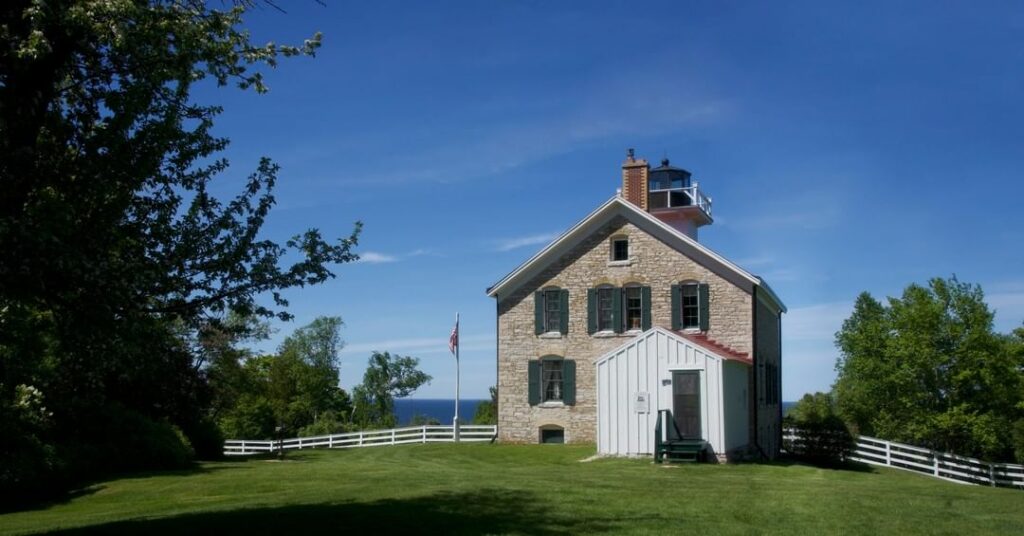
Pottawatomie Lighthouse
Sometimes, the journey makes a destination feel even more special. Such is the case with the Pottawatomie Lighthouse, Wisconsin’s oldest lighthouse, initially lit in 1836. The beacon is in Rock Island State Park, one of five state parks in Door County. Two ferry rides and a short hike are required to reach the prize.
Guests regularly rave about the stunning scenery and island-hopping adventures in Door County. Rock Island State Park gives historic lighthouse tours daily, and you can climb to the lantern room for a rewarding view.
The expedition to the “Rock Island Light” will likely take up most of the day but yields many opportunities for side adventures on Washington Island and Rock Island.
Plan Your Lighthouse Adventure
With so many lighthouses in the United States, you have many opportunities to explore the historic towers during your vacation. Not only will you learn about history, but you will also get stunning coastal views. Discover for yourself why lighthouses shine so bright.
This article originally appeared on Wealth of Geeks.

